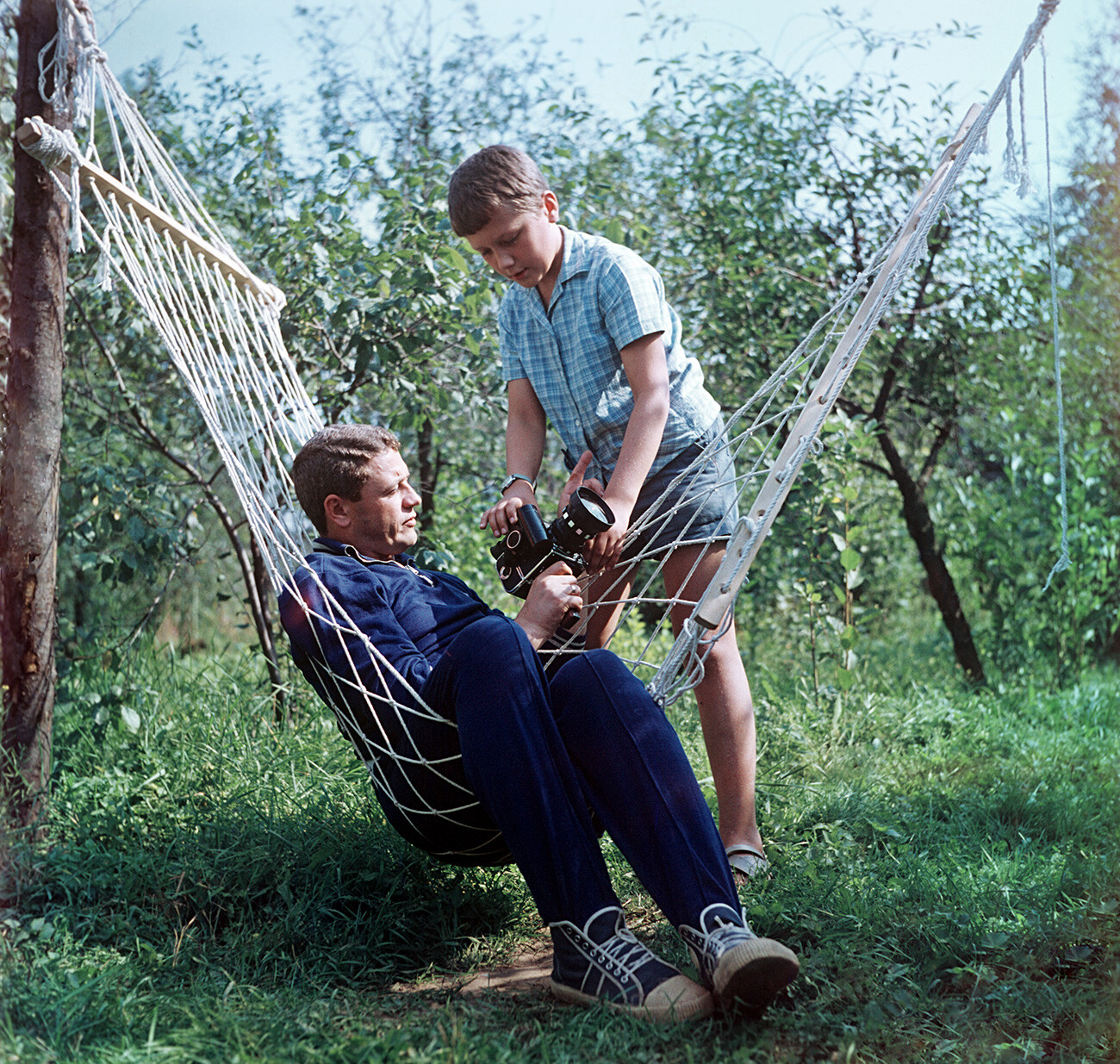

Geologist, Professor Vladimir Tikhomirov.
GIN RAN/russiainphoto.ruIt seems that every Soviet person had such shoes: sandals in the USSR were usually made with a closed toe, buckles and perforations. And all were made out of genuine leather according to ‘GOST’, the state standard.

People on the street.
Vsevolod Tarasevich/MAMM/MDF/russiainphoto.ruThey were usually worn with socks to avoid rubbing the feet. The most common colors were brown, black or white.
Most often, they were worn by men. Women preferred shoes with at least a small heel and a more elegant style.

‘The Adventures of Electronic’.
Konstantin Bromberg/Odessa Film Studio, 1980The most fashionable shoes among young people, especially men, were high-top rag sneakers with a rubberized toe.

Athletic shoes produced at the Krasny Rezinshchik factory.
Falin/SputnikThey became popular after the 1957 World Festival of Youth and Students and became something of an opposition to dress shoes.

Moscow. Viktor Tsoi. 1986.
Igor Mukhin/MAMM/MDF/russiainphoto.ruIn the USSR, ‘GOST’ was developed for these shoes and sold in large volumes. Schoolchildren, cosmonauts and rock musicians were the most likely to wear sneakers.

Cosmonaut Vladislav Volkov with his son Vladimir at his dacha.
Valery Cheredintsev/TASSThey then acquired the status of iconic footwear, thanks to Soviet cinema: they were worn in the movie ‘The Adventures of Electronic’ (1980), cartoons ‘Three from Prostokvashino’ (1978) and ‘Well, just you wait!’ (1969) and many others.

Production of the cooperative "Alina".
Sergey Subbotin/SputnikShoes for the beach made entirely of plastic began to be produced in the 1950s. Abroad they were called ‘jelly shoes’ and, in the USSR, they were nicknamed ‘mylnitsy’ ('soap dish'). They became especially popular with girls in the 1980s, when there was a worldwide trend for everything bright and shiny.
They were worn not only on the beach, but also in everyday life. High-heeled sandals were especially chic.

At the Swallow's Nest Castle.
Boris Kavashkin/TASSRubber flip-flops, known in the USSR as ‘vietnamki’ (a shout out to Vietnam, where they originally came from), in which two straps are fixed between the big and index toes, appeared in the USSR in the mid-1960s.

Sputnik International Youth Camp.
Shchidlovsky/SputnikAt first, these flip-flops were supplied by barter and, later, the country started its own production.
Flip-flops began to be produced in the city of Slantsy, Leningrad Region. So, in the USSR, the name ‘slantsy’ was used for them.
The wedge heel was invented by famous shoe designer Salvatore Ferragamo in 1936 and it became popular worldwide in the postwar years. He decided to use cork to lighten the weight of the shoe.
Soviet women began wearing wedges of various types in the 1960s and 1970s. They were clogs, sandals and other shoes. The shoes were not only stylish, but also comfortable in the summer.
They were produced by all local shoe factories in the USSR.

In Jubilee Park in Feodosia.
Collection by Anton Potapov/russiainphoto.ruWomen wore high heels more often than in sneakers, especially if they were going to the theater or to a restaurant. But, even on the photos taken on a summer evening somewhere at a seaside resort, it is noticeable that they loved to dress up, even for an ordinary walk.
Dear readers,
Our website and social media accounts are under threat of being restricted or banned, due to the current circumstances. So, to keep up with our latest content, simply do the following:
If using any of Russia Beyond's content, partly or in full, always provide an active hyperlink to the original material.
Subscribe
to our newsletter!
Get the week's best stories straight to your inbox